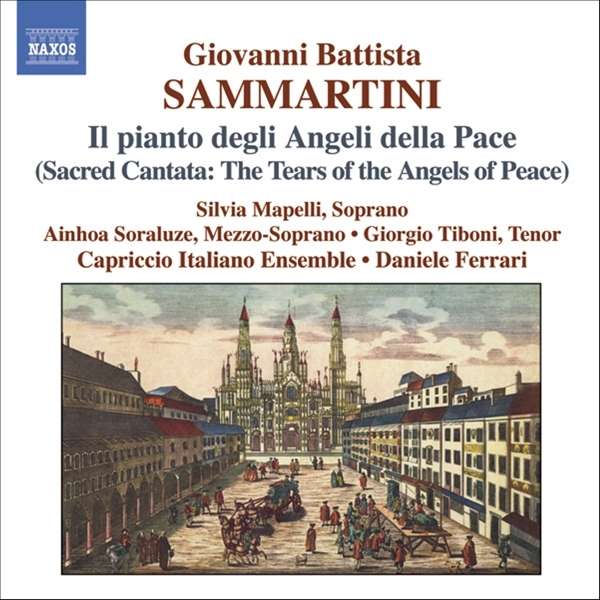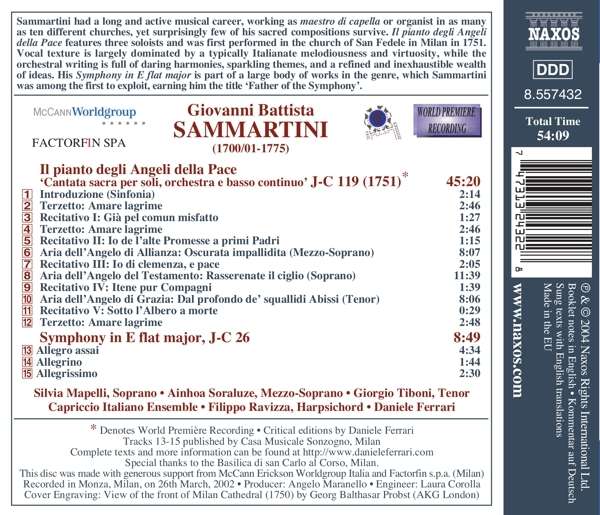
kompozytor
Sammartini, Giovanni Battista
tytuł
SAMMARTINI: Il Pianto degli Angeli della
wykonawcy
Ferrari, Daniele;
Ravizza, Filippo;
Capriccio Italiano Ensemble;
Mapelli, Silvia;
Soraluze, Ainhoa;
Tiboni, Giorgio
Ravizza, Filippo;
Capriccio Italiano Ensemble;
Mapelli, Silvia;
Soraluze, Ainhoa;
Tiboni, Giorgio
nr katalogowy
8.557432
opis
The cantata Il pianto degli Angeli della Pace was first performed in the church of San Fedele in Milan in 1751. It features three rôles, the Angel of the Alliance, a contralto, the Angel of the Testament, a soprano, and the Angel of Grace, a tenor. After an extensive orchestral introduction, the action begins with a trio, entitled Amare lagrime (Bitter Tears). This is in the form of a refrain that returns three times in the course of the composition, giving vent to the mournful feelings which prevail, sometimes with desperate and sometimes with melancholy accents, throughout the whole composition. Each character sings a da capo aria, preceded by a recitative. The plot is not based upon an episode of the Gospel, but is an edifying dialogue about the history of salvation and its fulfilment through Jesus Christ. The angels’ weeping for the passion and death of the Saviour, in which the whole of creation joins, constitutes, in effect, a leading motif linking all the episodes of the cantata. The instrumentation, traditional at the time, calls for strings, oboes, horns, and basso continuo.
Sammartini’s Symphony J-C 26 is part of a large corpus of more than seventy works in this genre. Most of these compositions consist of three contrasting movements and were intended to entertain Milan’s enthusiastic audience either in enclosed or open spaces. From our point of view they form a kind of field for experimentation, showing a stylistic evolution towards the modern symphony and sonata form. All Sammartini’s symphonies display the composer’s brilliant temperament. A constant flow of melodic and rhythmic ideas, occasionally abrupt changes in the harmony, and highly varied formal structures reveal a constant striving after an ever more daring instrumental language.
nośnik
CD
gatunek
Muzyka klasyczna
producent
Naxos
data wydania
08-11-2004
EAN / kod kreskowy
747313243228

(Produkt nie został jeszcze oceniony)
cena 58,00 zł
lubProdukt dostepny w niewielkiej ilości.
Wysyłka w ciągu 3 dni roboczych
Darmowa wysyłka dla zamówień powyżej 300 zł!
Darmowy kurier dla zamówień powyżej 500 zł!
sprawdź koszty wysyłki
































